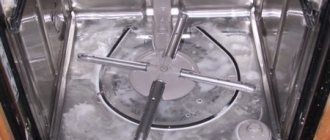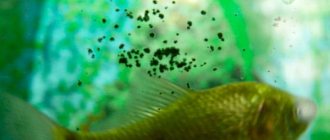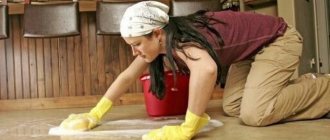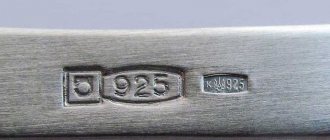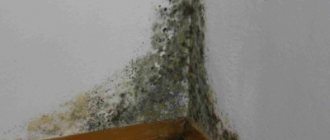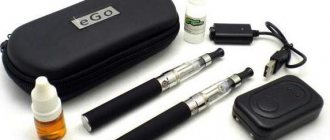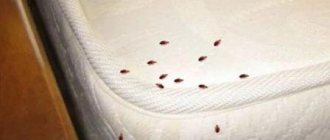Author: Dimon
04 September 2021 14:45
Tags: interesting facts tea
1604
3
If you do not wash the cup thoroughly immediately after drinking tea, an unpleasant darkish coating will remain on the walls. Sometimes old stains do not disappear even after washing. As a result, the dishes take on an unkempt and sloppy appearance.
0
Why does this happen and is this plaque dangerous to health?
Film on tea: why it forms and how to avoid it
Many people have noticed that if you leave brewed tea for a while, a film appears on its surface. It has a pearlescent hue and shimmers with all the colors of the rainbow. Why does such a film appear? There are several versions, although none of them has been officially confirmed. Some people think it's because the water is too hard. Others are inclined to believe that the film is formed as a result of the interaction of the chemical elements included in tea with oxygen. Let's try to figure out how objective these and other assumptions are. It is also worth finding out whether this layer is dangerous for the human body.
Melamine sponge
These magic erasers, which appeared on sale relatively recently, do an excellent job of cleaning dishes. They are made from melamine foam and only require water for them to show off their wonderful properties. Judging by the reviews, they cope with stubborn and difficult stains (crayons and ink, scuff marks). Although flexible and soft to the touch, this foam acts like the finest sandpaper and can remove tough and stubborn coffee and tea stains.
The influence of water composition on the tea film
It is necessary to carefully select water for brewing tea. Why? Ordinary tap water has increased hardness and contains large amounts of iron and foreign impurities. After brewing with such water, a coating in the form of a film can very quickly form on the surface of the tea. After a few hours, the film becomes oily and more noticeable. It contains essential oils of tea with impurities.
What water is best to choose for brewing and why? The best option is spring water, but it is very difficult to find such a source and use it constantly. Bottled drinking water is more accessible and can be purchased at any supermarket. Distilled water will also work, as long as it is saturated with oxygen. When brewing with good water, the resulting layer on the tea drink will be almost invisible or there will be no film on the tea at all.
Salt
Regular table salt will help get rid of plaque: rub the surface of the cup with it. However, microcracks from salt particles may appear on the ceramic surface. As a result, such damage will only speed up the staining process. Therefore, you should use only finely ground salt or prepare a concentrated solution. For 0.5 liters of water you will need a teaspoon of salt.
The influence of the chemical composition of tea on film
Tea leaf extract is a complex chemical compound. The composition includes catechins, theaflavins, thearubigins, caffeine alkaloids, proteins, mineral salts and other substances. Many of them, when interacting with air, form a mixture of oxidation products and polycondensates, and become tarred, forming a film. The finished tea contains caffeine in two states: combined with tannin and in free form. Its combination with tannin (caffeine tannate) is responsible for the formation of the film.
It is believed that black tea reaches its maximum caffeine content after just five minutes. Therefore, longer brewing is not recommended. Research has shown that the resulting layer contains catechin derivatives, nitrogenous bases, protein molecules, calcium, iron, and magnesium.
Film on tea: hidden danger
The Chinese, who know a lot about good tea, believe that tea brewed the day before becomes poison in the morning. The Japanese also share this opinion. Of course, a film on tea cannot cause poisoning. But it contains a large amount of oxidized low-molecular tannins, catechin derivatives, nitrogenous bases, protein molecules, calcium, iron, magnesium. If the insoluble film enters the human body, it can cause severe irritation to the intestinal and stomach mucosa.
The film, covering the mucous membrane, prevents the absorption of nutrients. Intestinal peristalsis slows down, and food masses accumulate in the gastrointestinal tract over time. This leads to processes of rotting and fermentation. Bacterial activity increases, erosion may develop, and ulcers may appear. If you have diseases such as duodenitis, gastritis, it is better to refrain from regularly drinking tea with film, so as not to provoke an exacerbation of the disease.
The most dangerous is tea that was brewed more than 12 hours ago. It accumulates guanine in large doses, a purine compound that is found in tea along with caffeine. The oxidation product of guanine, guanidine, appears in tea 15 minutes after brewing or during boiling of brewed tea. Guanidine is a toxic substance that causes increased blood pressure and increased heart rate. An overdose of this substance is dangerous.
Hard water?
Experts advise paying attention to the appearance of the film. The uniform color of the plaque or the smallest inclusions in it indicate that the cause of the formation of the film was too hard tap water. The high content of calcium carbonate in water, when combined with organic substances contained in tea, causes a film to appear. If you add a slice of lemon or a drop of lemon juice to the drink, the film will disappear.
There is also an opinion that the reason for the formation of the film is the oxidation of the iron contained in the water.
Rainbow in a cup
A thin rainbow film, homogeneous and easily broken when stirring the drink, is formed by essential oils and tannins contained in tea and giving it a unique aroma and tart taste. If brewed tea sits untouched for some time, the oils and tannins oxidize—the result of this oxidation is a rainbow film on the surface of the liquid. The stronger the tea, the more noticeable it will be.
Another reason for the appearance of a brownish film, according to experts, is the oxidation of mineral and organic compounds, including caffeine and catechins contained in tea, under the influence of oxygen in the air. The composition of this film is very complex - it includes protein compounds, purines, tannins, iron, calcium, and other substances and compounds.
Why doesn't a coating form when adding milk to tea?
0
You may notice that when milk is added, plaque does not appear or is barely noticeable. There's a reason for this. Milk contains casein protein. By reacting with tannins, it reduces their concentration by an average of 80%. At the same time, milk also reduces the beneficial properties of tannins and catechins, so you should not overuse it by adding it to the drink.
Harmful or beneficial?
Experts have different opinions about the effect of tea with film on human health. On the one hand, it is evidence of a high content of beneficial essential oils, on the other hand, it forms an insoluble coating, which, with constant consumption of strong brewed tea, can settle on the mucous membrane of the stomach and intestines, preventing the absorption of nutrients.
It has been established that drinking tea that has stood for a long time has the worst effect on human health - after brewing, black tea should be drunk within several hours, and in no case should the tea be left overnight. After this, the drink loses its beneficial properties, and the content of harmful substances increases, including toxic guanidine, which is formed during the oxidation of harmless guanine contained in tea.
High concentrations of guanidine are extremely dangerous, and for symptoms of poisoning to appear, it is enough to drink several cups of yesterday's strong tea leaves.
Because of the film, a poorly washable coating forms on the walls of the cups, which sometimes even washing in the dishwasher does not help get rid of. If the tap water in your area contains a lot of calcium, magnesium and iron salts, it is better to get a special filter or use purified bottled drinking water to make tea. Do not forget that distilled water, like too hard water, does not provide any benefit to the body.
Source
Cleaning methods using improvised means
Substances that can be found in every home will help you clean your mug from traces of coffee and tea:
- salt;
- household chemicals;
- bleach;
- toothpaste;
- vinegar;
- lemon juice or acid;
- baking soda.
We will look at options for cleaning dishes that do not require a significant investment of time - no more than a couple of minutes. Let's take a closer look at how to wash a mug using a certain product.
Baking soda
Every housewife always has this product at hand. And the cost of soda is not at all significant. At the same time, it has excellent cleaning properties.
Plaque on dishes can be washed off by rubbing it with soda. To do this, pour a little product into a cup moistened with water and thoroughly rub all its surfaces. After this procedure, rinse well under running water and wipe dry.
You can also prepare a soda solution:
- Fill the dirty cup with warm water to the brim.
- Pour 1 teaspoon into a bowl and mix thoroughly until it is completely dissolved.
- Leave the solution in the cup for 2-3 minutes.
- After the specified time, wash the mug with a brush or sponge.
Baking soda is an effective cleaning agent. But its most important property is safety, because there are no harmful chemicals in its composition. It washes off perfectly with water.
Lemon acid
Citric acid works great to remove traces of coffee and tea on dishes. In order to use it to clean the cup from plaque, you must proceed as follows:
- For 1 cup you will need 1 teaspoon of citric acid.
- Pour boiling water to the top and wait 5 minutes.
- After the specified time has passed, wash the dishes.
If you have a large number of dirty cups, this product is very practical.
Lemon can remove plaque quite effectively. Cut a slice and rub the cup with it. We wait 30 minutes, after which we wash the dishes. This method is effective for minor contamination.
Exactly the same steps are carried out as in the previous method, when a soda solution was used. Only now vinegar is used as a solution for cleaning mugs.
Toothpaste
Another simple way to deal with tea stains. We will use toothpaste as a cleaning agent:
- Take an old toothbrush, wet it and apply toothpaste to it.
- Thoroughly rub the walls and bottom of the cup, and then rinse off the toothpaste with running water.
It will be pleasant to drink from such a cup, and it will shine clean again.
Bleach
If the stain is severe, citric acid, vinegar or baking soda may not be able to remove the stain. In this case, laundry bleach, which contains active oxygen, will come to the rescue:
- Pour hot water into a cup.
- Add a little bleach, mix thoroughly and leave until morning.
- We rinse the cup well.
We suggest you familiarize yourself with How and how to clean glasses glasses without streaks?
Household chemicals
The store sells many different dishwashing gels. With their help, you can cope with tea stains on cups without much effort and a lot of time. Even the most stubborn dirt can be easily removed thanks to the active substances they contain.
The soft consistency is another advantage of such products. Thanks to this, the surface of the dishes is not scratched, but is carefully cleaned. Examples of these dishwashing gels are Pemolux and Comet.
In order to get rid of plaque, just rub the surface of the cup with salt. But if the surface of the dishes is ceramic, salt particles can damage it and microcracks will appear. Subsequently, this will only speed up the process of plaque formation.
It is necessary to use finely ground salt, or even better, prepare a concentrated saline solution for washing dishes. For 0.5-1 tablespoon of water you will need 1 teaspoon of salt.
All the described remedies for removing traces of coffee and tea are classic. But quite extraordinary approaches can also cope with the problem. For example, leave green tea or kefir in a cup until the morning. But only you can decide which method to choose. Everything will depend on which remedy is at hand at the moment, when the plaque was discovered and how much time you have to fix the problem.
The choice of cleaning method depends on the material from which the flask is made.
| Bulb material | Tools/products used |
| Metal | Lemon (citric acid); baking soda; vinegar; baking powder for the dough; rice soda; salt; Coca-Cola; tablets for dentures. |
| Glass | Lemon (citric acid); baking soda; Apple vinegar; white. |
The above list is not complete. It contains substances for the most effective cleaning. The division into categories based on material is also conditional. It is carried out on the basis of effectiveness, based on the results obtained experimentally.
Let's highlight the main and most popular methods that will help solve the problem.
Lemon acid
Households often use citric acid, which can perfectly clean a stainless steel thermos and remove tea residues from the walls of the dish. This option is one of the most popular and effective.
Take two tablespoons of acid granules and pour them into a thermos.
Fill the container with boiling water to the very top. It is important to pour boiling water to the top so that the entire internal area of the vessel is covered in lemon water.
Close the lid tightly and leave the container to infuse for 6-8 hours.
Instead of citric acid, you can use lemon to clean metal thermoses, teapots and other utensils. Finely chop the citrus and throw it into the flask, pour boiling water over it. It is advisable to leave it overnight.
In the morning, drain the water and discard the lemon pieces.
Rinse the vessel well.
The cleaning option with citric acid is very simple and effective.
It has long been a well-known folk remedy for eliminating impurities of various origins.
To clean a stainless steel thermos, take baking soda and mix it in proportion to a glass of hot water. We calculate the amount of soda based on the volume of the container. That is, if the container holds 3 glasses of water, then mix three tablespoons of soda.
We leave the vessel overnight, and in the morning we rinse it with warm water, washing away any remaining liquid.
Cereals are also added to the soda solution, for example, pearl barley, which serves as an abrasive. Just fill half the flask with pearl barley and shake for a few minutes.
It is important to note that the cereal must first be soaked so that it is not too hard and does not damage the inner walls.
Thermos for coffee
Consider vinegar as a means of cleaning plaque from stainless steel cookware.
Pour one quarter of table vinegar into a thermos, and fill the remaining three quarters with hot water.
Close the container tightly and shake the resulting solution vigorously.
Let the vessel sit for 3-4 hours. Periodically you need to shake the thermos for 1-2 minutes.
After steeping, drain the liquid and thoroughly rinse the container. Do not leave the liquid inside for too long: prolonged exposure to acid will not benefit the stainless steel product.
Vinegar will help remove tea stains from a thermos
Mustard
The key feature of the option is that it can also remove fat from the walls. For example, if you pour any broths into a container.
Fill the thermos with hot water and add 3-4 tablespoons of regular mustard powder.
Close the lid tightly and mix the liquid thoroughly for several minutes.
Leave the resulting solution in the container overnight.
In the morning, drain the mustard water and rinse the container clean.
Let's look at how you can use salt to clean the inside of a thermos from plaque.
Take a pan, pour hot water and put it on fire.
Add salt to water to create a concentrated saline solution. In this case, you can not spare salt and pour it in large quantities (0.7 - 1 kg).
Pour the resulting hot saline solution into the flask, tighten it and leave for a couple of hours. After the procedure, rinse everything well with running water.
The good thing about this option is that salt will not only remove plaque, but also absorb extraneous unpleasant odors.
We suggest you read: Cleaning a silver coin with ammonia
For light stains, you can use baking powder.
Fill the flask with water at room temperature.
Add 3-4 tablespoons of baking powder. Leave the stainless steel thermos to brew for a couple of hours.
After a few hours, drain the water and rinse the flask well with a soft dish brush.
Coca Cola
Don’t be surprised - the popular drink will help clean the thermos of tea deposits formed from the inside just as well as other means. The technique may seem unusual, but it is very effective.
Boil cola in a saucepan and pour into the flask.
Close the lid and shake thoroughly.
Unscrew the cap, open the valve to let the gases escape, and leave the whole thing overnight.
In the morning, drain the cola and rinse the container.
This drink has many purposes, including cleaning a thermos.
It is difficult to imagine how one could come to discover such an approach. However, it works. It is most important. This hygiene product is used as follows:
- tablets are placed in a flask at the rate of one per half liter;
- pour water at boiling temperature;
- stand for about 10 hours;
- rinse.
White
This method is more suitable for removing tea stains from a glass flask. The method involves performing the following steps:
- fill the container a quarter full with product;
- add boiling water;
- shake for a few minutes;
- wash with dishwashing detergent;
- rinse with clean running water.
To increase the cleaning ability of the product, you do not need to add water.
Answers to the question “How to clean a thermos?” may be the most unexpected. You can, for example, use soda and rice. This should be done like this:
- place baking soda and rice in a 1:2 ratio;
- Fill the container ½ full with boiling water;
- close tightly;
- shake for a few minutes;
- rinse the vessel.
Ammonia
Recipe. Pour 1 tbsp into the flask. l. ammonia, add warm water to the top. Leave...that's right, overnight. Rinse after. Reality. Diluted ammonia by itself will not clear tea deposits, it will only soften it. And the stench in the kitchen will be so bad it will blow your eyes away. They also advise creating an incomprehensible design from cork, strings and a bottle. The bottom line is that the stink will still be there. But there’s no point.
What to do. Sprinkle a little ammonia on the bottom of the thermos and screw the cap tightly. After 6 hours, open it, take a brush and, with light movements, remove absolutely all the plaque. In the absence of this, we pierce the dishwashing sponge with a fork. We proceed in the same way.
How to restore a “fresh” look to cups?
Plaque can be removed using conventional cleaning products. However, with old stains this may not be enough. In this case, regular baking soda will come to the rescue. You can rub the cup with it, and the dishes will become snow-white again.
Hydrogen peroxide and activated carbon also have whitening properties. It is not for nothing that the preparation of such a mixture is used to remove tea, coffee and wine plaque on tooth enamel.
In general, to avoid stains on the dishes, simply wash the cup after each tea party.
So, you should not be afraid of tea plaque - this is only the result of the action of tannins contained in tea leaves. It is not harmful or dangerous, but to give the dishes a more well-groomed appearance, you should regularly wash the cups or clean them with special means, for example, soda.
If you find an error, please select a piece of text and press Ctrl+Enter.
Source
Is the raid dangerous?
Tannins, the pigments of which color dishes, are not only not dangerous, but are even beneficial for the body. Here are just some of the properties of tannins and catechins:
- They have anti-inflammatory and antibacterial effects;
- Strengthen the walls of blood vessels;
- Cleanse the body of toxins;
- Improves liver condition;
- They promote the release of the hormones dopamine and serotonin, which means they improve mood.
With excessive use, side effects occasionally occur:
- Abdominal pain, indigestion;
- Pressure surges;
- Decreased appetite.
Tannins and catechins are found not only in black, but also in green tea. Moreover, their concentration is higher in it. This is one of the reasons why it is so useful. Tannins are also found in plants such as oak, chestnut, persimmon, cocoa, conifers, and bird cherry.
The stronger the tea you brew, the more likely it is that plaque will appear. Although it is not harmful to health, excessive consumption of caffeine contained in tea may not be beneficial. So if you regularly get plaque on the sides of your mug or glass, you might want to drink a weaker drink.
Interesting fact : in order for drinking tea to bring the greatest benefits, you should add lemon to it. This citrus improves the absorption of tannins, not to mention its other beneficial properties. It is also useful to add mint, lemon balm or thyme to tea.
Is it dangerous to drink tea if there is a rainbow film on it?
Our article about the expiration date of tea caused a great response among readers. The most controversy arose around the iridescent film that appears on the surface of the tea leaves after it cools. We decided to figure out what this film actually is and whether it can harm your health.
There is nothing more beautiful than freshly brewed tea. Do you agree?
Version 1: Water is to blame for everything (or rather the calcium it contains)
The first formal scientific research into tea film was carried out in 1992, when a British tea manufacturer asked chemists Michael Spiro and Deogratius Jaganil from the Imperial College of Science, Technology and Medicine to study the issue.
The scientists began by heating London tap water and using it to brew regular black tea from bags. When the tea cooled, a “same film” remained on its surface, which the researchers collected and studied using an electron microscope. Upon magnification, they found a complex organic layer (85%) with small white spots of calcium carbonate on the surface (15%).
Calcium carbonate is a common calcium salt. It is formed when calcium ions and bicarbonate ions combine with each other. In this case, a prerequisite for its production is the presence of both chemical substances - calcium ions and bicarbonate ions in the water. Pure distilled water solves this problem: even with calcium ions or bicarbonate ions separately, it will not allow plaque to form on the tea.
The cause of the appearance of tea film can be both the quality of water and essential oils.
But what about the organic part of the film? Taking a closer look, Spiro and Jaganil discovered a group of chemical compounds called polyphenols. These polyphenols are antioxidants (supposedly the healthiest part of tea) that combine with calcium carbonate to create a rainbow effect.
Using salt and vinegar
Another very effective mixture that will help get rid of difficult and old stains. Removing tea and coffee stains is one of the many uses of vinegar, which is moderately acidic. Thanks to it, vinegar dissolves the pigments that make up the stain.
Salt helps in this reaction, which gives the composition abrasive properties. You will need two tablespoons each of vinegar and salt. Wash the cup with a sponge to remove surface stains.
Make a paste of salt and vinegar and apply it to the surface of the cup. Leave it on for about 10 minutes. Then wipe it with the hard side of the sponge to remove all stains. Then rinse it under running water and wipe dry.
